Laser experiments can track how the excitations of quantum states of a “buckyball” relax after the molecule collides with other particles.



Quantum entanglement and spacetime wormholes helped to solve a long-standing quandary.
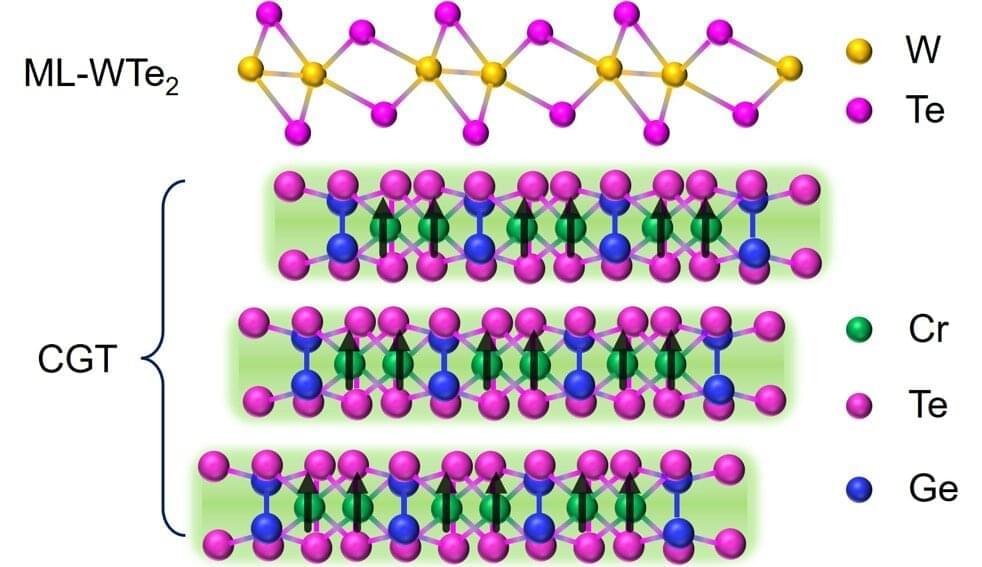
A research team led by a physicist at the University of California, Riverside, has demonstrated a new magnetized state in a monolayer of tungsten ditelluride, or WTe2, a new quantum material. Called a magnetized or ferromagnetic quantum spin Hall insulator, this material of one-atom thickness has an insulating interior but a conducting edge, which has important implications for controlling electron flow in nanodevices.
In a typical conductor, electrical current flows evenly everywhere. Insulators, on the other hand, do not readily conduct electricity. Ordinarily, monolayer WTe2 is a special insulator with a conducting edge; magnetizing it bestows upon it more unusual properties.
“We stacked monolayer WTe2 with an insulating ferromagnet of several atomic layer thickness—of Cr2Ge2Te6, or simply CGT—and found that the WTe2 had developed ferromagnetism with a conducting edge,” said Jing Shi, a distinguished professor of physics and astronomy at UCR, who led the study. “The edge flow of the electrons is unidirectional and can be made to switch directions with the use of an external magnetic field.”
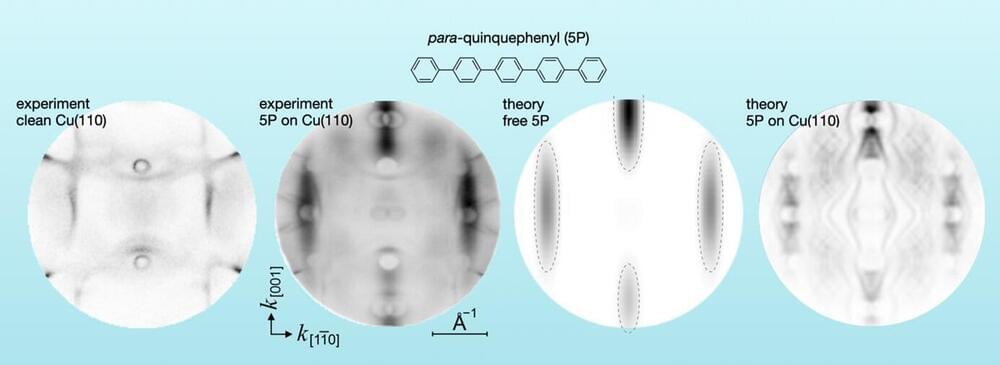
Squeaky, cloudy or spherical—electron orbitals show where and how electrons move around atomic nuclei and molecules. In modern chemistry and physics, they have proven to be a useful model for quantum mechanical description and prediction of chemical reactions. Only if the orbitals match in space and energy can they be combined—this is what happens when two substances react with each other chemically. In addition, there is another condition that must be met, as researchers at Forschungszentrum Jülich and the University of Graz have now discovered: The course of chemical reactions also appears to be dependent on the orbital distribution in momentum space. The results were published in the journal Nature Communications.
Chemical reactions are ultimately nothing more than the formation and breakdown of electron bonds, which can also be described as orbitals. The so-called molecular orbital theory thus makes it possible to predict the path of chemical reactions. Chemists Kenichi Fukui and Roald Hoffmann received the Nobel Prize in 1981 for greatly simplifying the method, which led to its widespread use and application.
“Usually, the energy and location of electrons are analyzed. However, using the photoemission tomography method, we looked at the momentum distribution of the orbitals,” explains Dr. Serguei Soubatch. Together with his colleagues at the Peter Grünberg Institute (PGI-3) in Jülich and the University of Graz in Austria, he adsorbed various types of molecules on metal surfaces in a series of experiments and mapped the measured momentum in the so-called momentum space.
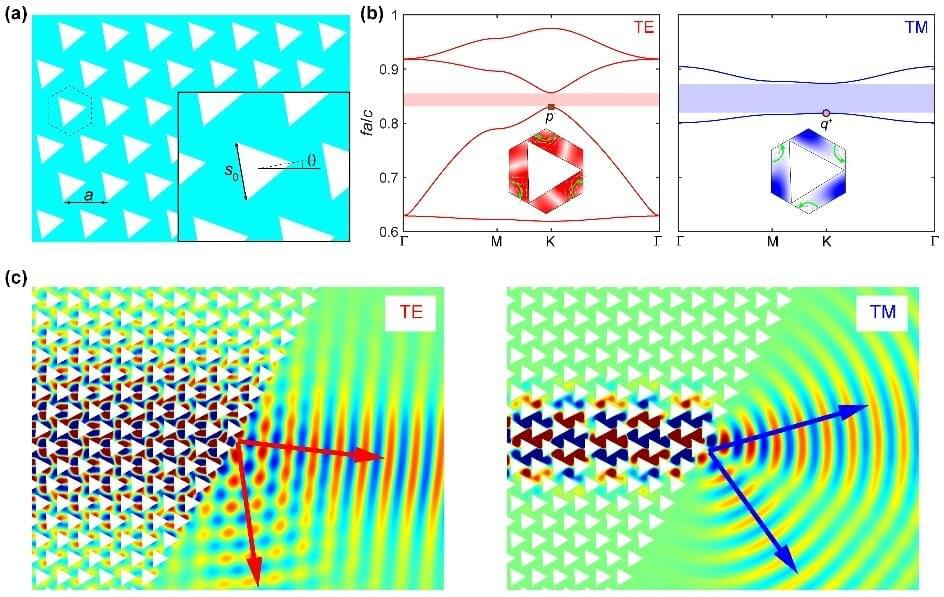
The introduction of topology in photonic systems has attracted considerable attention not only for the elaborate molding of light but also for its practical applications in novel photonic devices. Originally, the quantum Hall effect of light was realized in photonic crystals (PCs) by introducing external electric or magnetic fields to break the time-reversal symmetry (TRS).
Instead of breaking the TRS, the quantum spin-Hall effect of light has been achieved in TRS-preserved systems where photonic pseudospins can be constructed. Recently, the valley Hall effect of light has been realized by introducing the binary valley degree of freedom (DoF) into photonic systems. One of the vital features of the valley Hall effect is the nontrivial photonic band gap, which is characterized by the nonzero valley Chern number.
Furthermore, valley-dependent edge modes are supported at the domain wall which consists of two PCs with opposite-valley Chern numbers. The valley Hall effect of light is commonly realized in a triangular-lattice PC with broken mirror symmetry or in a honeycomb-lattice PC with broken spatial inversion symmetry, and it is compatible with existing nanophotonic fabrication technique.
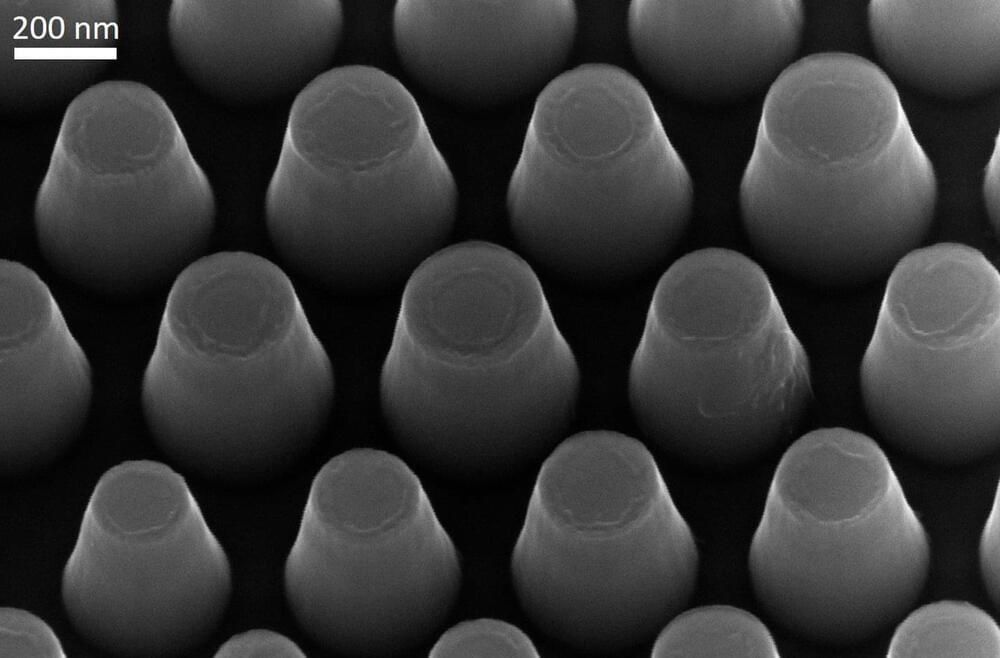
Researchers from Linköping University and the Royal Institute of Technology in Sweden have proposed a new device concept that can efficiently transfer the information carried by electron spin to light at room temperature—a stepping stone toward future information technology. They present their approach in an article in Nature Communications.
Light and electron charge are the main media for information processing and transfer. In the search for information technology that is even faster, smaller and more energy-efficient, scientists around the globe are exploring another property of electrons —their spin. Electronics that exploit both the spin and the charge of the electron are called “spintronics.”
Like the Earth, an electron spins around its own axis, either clockwise or counterclockwise. The handedness of the rotation is referred to as spin-up and spin-down states. In spintronics, the two states represent the binary bits and thus carry information. The information encoded by these spin states can be converted by a light-emitting device into light, which then carries the information over a long distance through fiber optics. The transfer of quantum information opens the possibility to exploit both electron spin and light, and the interaction between them, a technology known as “opto-spintronics.”

so-called qubits, to perform computations much faster than any classical computer ever could.
While multiple frontrunner startups have explored various technology platforms, from superconducting qubits and ion trap systems to diamond-based quantum accelerators, scaling the number of qubits from a few dozen to hundreds, thousands, and eventually millions of qubits has remained notoriously difficult. But this might change with photonic quantum computing.
The startup ORCA Computing builds photonic quantum computers that use photons, the fundamental particles of light, as qubits. Using quantum memories and established telecommunications technology, it can scale its devices more easily and integrate with existing computing infrastructure e.g. in data centers. Based on the core memory technology developed by Kris Kaczmarek, ORCA was officially co-founded by Ian Walmsley, Richard Murray, Josh Nunn, and Cristina Escoda in Oxford in the fall of 2019. This summer 2022, it has raised a $15M Series A led by Octopus Ventures and joined by Oxford Science Enterprises, Quantonation, and Verve Ventures, with additional, project-based funding provided by Innovate UK. Previous investors also include Atmos Ventures and Creative Destruction Lab.
Dr. Joscha Bach is VP of Research at AI Foundation and Author of Principles of Synthetic Intelligence, focused on how our minds work, and how to build machines that can perceive, think, and learn.
http://bach.ai.
Twitter ► https://twitter.com/Plinz.
LinkedIn ► https://linkedin.com/in/joschabach.
SHOW NOTES 📝
0:00 Open.
0:17 Hello & welcome.
0:37 Dr. Joscha Bach bio and introduction.
0:56 “It’s an insane world; an amazing time to be alive“
3:46 Conversation on the S-curve; current instability based on not handling aftermath of collapse of Industrial Revolution society with the advent of the Internet.
8:22 “Either kids or long-term civilization”; carbon sequestration involves not burning any carbon at all.
10:08 Organizing principles conflict with systems bent on infinite growth.
14:30 More on Dr. Bach at Cambridge; entrepreneurial journey leads to MIT and then AI Foundation.
16:23 Relationship between the physical world and our minds; pattern generation; types of computers.
18:10 Mathematics vs. Computation.
19:20 Accidental question-Dr. Bach’s thoughts on psychedelics.
20:27 Turing, “something is true if you can prove it“
23:14 Quantum computing discussion; Minecraft CPU example; “is our universe efficiently implemented or inefficiently implemented?“
23:50 Relationship between mind and universe; observational interface.
27:28 Materialism and idealism may complement each other.
29:08 Dream space neural architecture; “you and me are characters in a multimedia novel being authored by the brain”; the collective is part of your dream.
31:51 Necessity of ability to change the way you perceive vs. changing a physical world; perception upgrade is really a will or desire upgrade.
34:12 What is a model? Perspectives of variables and their relationship; probabilities.
35:58 Model convergence to truth aided by probabilities; motivations guide preferences.
38:00 People are born with ideas and then acquire preferences; motivation is how you regulate and push against reality; feedback loop from brain regulating body, awareness and unawareness of loops.
41:28 Needs don’t form a hierarchy; they coexist and compete.
43:00 “the shape of your soul is the hierarchy of your purposes“
45:26 Neurons; dopamine and other brain chemicals speak many languages; “neurons get fed if you regulate what you want to regulate“
48:50 Social interaction and brain chemistry; neurons work through pattern recognition, then patterns in the patterns.
51:43 Auditory (and all) senses build layers until we get a unified model of the world/universe.
53:24 Question-who’s in charge of the super-intelligence; single mind; which kind of system; sane/insane implementation.
59:50 Precepts; spatial intelligence; pattern to perception to worldview; intentional self.
1:02:36 Self controls simulations in the brain; “only a simulation can be conscious“
1:05:05 “The reason why you perceive the world as meaningful is because it’s generated in your mind to model your meaning.“
1:07:10 Everything you can perceive is generated by your mind; model of architecture.
1:11:45 Use of the DLPFC (dorsolateral prefrontal cortex); “hippocampus has a script”; neurons individually not that important, somewhat interchangeable, just a signal processor.
1:14:52 “Are we individually intelligent?” Not generally so; generations of specialized people talked to each other; rebuilding efforts usually get foundations wrong; “it’s hard to wake a sleeping person; it’s impossible to wake a person pretending to sleep“
1:17:52 “The family of good people” is a human condition; morals need to guide our decisions but not our model-making.
1:19:00 Human-centric social media; scientists and philosophers are mostly confused people, humble but without answers; Dunning-Kruger Effect.
1:20:40 More on social media; understanding the nature of reality; “which way can I be useful to other people?”; why are we drawn to things that don’t have utility, like politics on current social media.
1:24:20 Social media done right are individual thoughts in the same mind, “Gaia doesn’t exist but it would be very useful to have one”; endgame of social media is a global brain.
1:26:15 Current society optimized for short games; “tumors“
1:29:02 Lebowski Theorem — “No super-intelligent system is going to do anything that is harder than hacking its own reward function“
1:31:12 “Imagine you build an AI that is way smarter, why SHOULD it serve us?“
1:32:20 “Maybe our motivational function is wrapped up in a big ball of stupid so we don’t debug it;” opting out of reality; how can we balance super-intelligence, will, and evolution or conditions of existence.
1:34:08 Philosophical remarks; reiteration that things are just happening, making it very difficult to predict outcomes; there isn’t a running simulation of a better society so it’s difficult to make changes.
1:36:15 Life is about cells, and cells are very rare.
1:38:08 Would have to be a larger, more imperceptible pattern around us and how would we know; Minecraft example.
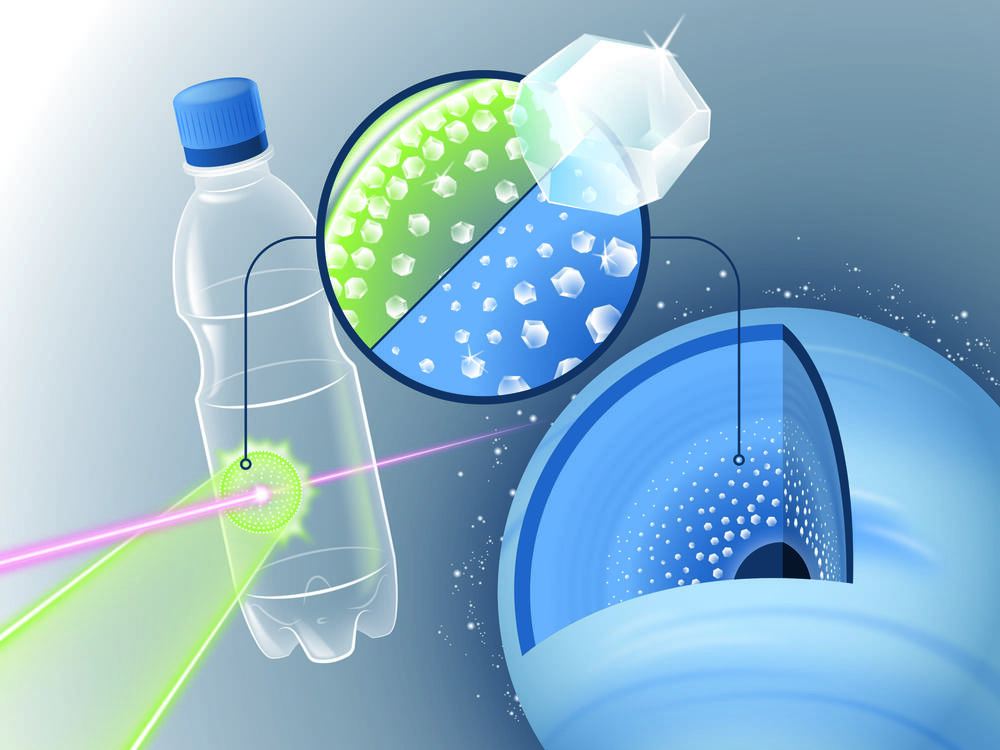
What goes on inside planets like Neptune and Uranus? To find out, an international team headed by the Helmholtz-Zentrum Dresden-Rossendorf (HZDR), the University of Rostock and France’s École Polytechnique conducted a novel experiment. They fired a laser at a thin film of simple PET plastic and investigated what happened using intensive laser flashes. One result was that the researchers were able to confirm their earlier thesis that it really does rain diamonds inside the ice giants at the periphery of our solar system. And another was that this method could establish a new way of producing nanodiamonds, which are needed, for example, for highly-sensitive quantum sensors. The group has presented its findings in the journal Science Advances.
The conditions in the interior of icy giant planets like Neptune and Uranus are extreme: temperatures reach several thousand degrees Celsius, and the pressure is millions of times greater than in the Earth’s atmosphere. Nonetheless, states like this can be simulated briefly in the lab: powerful laser flashes hit a film-like material sample, heat it up to 6,000 degrees Celsius for the blink of an eye and generate a shock wave that compresses the material for a few nanoseconds to a million times the atmospheric pressure.
“Up to now, we used hydrocarbon films for these kinds of experiment,” explains Dominik Kraus, physicist at HZDR and professor at the University of Rostock. “And we discovered that this extreme pressure produced tiny diamonds, known as nanodiamonds.”

Some of us, when we hear the word quantum (plural quanta, from the German word Quanten), might think of health supplements, a sports car, or even the television show Quantum Leap. More recently, in Marvel Studios movies such as Ant-Man, Doctor Strange, and Avengers: Endgame, “the quantum realm” is presented where time flows differently from our ordinary reality and the Avengers may use the subatomic world “to go back in time”, a world that “is smaller than a single atom” (Woodward, 2019, para.20)
We might have also seen or known the meaning of words such as quantum mechanics, quantum computing, and quantum entanglement, but what is a quantum and how does it relate to our ordinary realm?
A quantum is a word that refers to “how much”; it is a specific amount. For example, if the speed of your car happens to be quantized in increments of 10 mph, then as you accelerate your car from 10 mph, the speed will jump to 20 mph, without passing through any speed between 10 mph and 20 mph. A speed of 12 mph or 19 mph is excluded because the speed of your car can only exist in those increments of 10 mph.